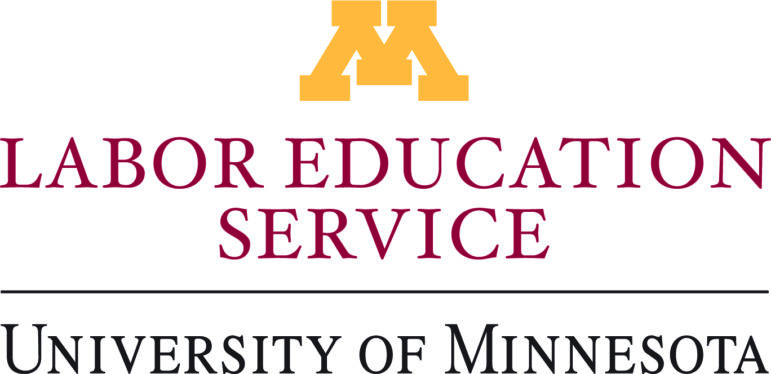Workday Magazine holds the powerful to account while bringing the perspectives of everyday workers, and the organizations that defend their rights, to focus. We emphasize long-form investigative journalism to unearth the concealed and buried. Our publication is based in Minnesota and covers the greater Midwest, along with international issues that affect workers, like climate change and U.S. militarism.
Workday Magazine fulfills the mission of the Labor Education Service at the University of Minnesota by providing a public outlet to examine the conditions that workers face on a day-to-day basis. We began publishing in the summer of 2000 with support from Minnesota’s labor community. We were the first online labor news publication in the United States.


Sarah Lazare, Editor
Sarah has been a journalist for 10 years, covering U.S. militarism, climate, and labor. She joins the LES team from In These Times, where she was a web editor and reporter for five years. Sarah got her start reporting with the Independent Media Centers that emerged as part of the global justice movement. She also has a background in organizing workers and mobilizing against U.S. wars. Sarah lives in Chicago, where she documents labor struggles in the Midwest, and examines how U.S. militarism and climate change affect poor and working people around the world.

Isabela Escalona, Senior Associate Editor
Isabela began working with Labor Education Service and Workday Magazine in 2022. She grew up in Oak Park, Illinois and earned her B.A. from Macalester College in St. Paul in International Studies. Isabela worked as a Communications Organizer at Centro de Trabajadores Unidos en la Lucha (CTUL) in Minneapolis for three years. Along with her professional work, Isabela has a shared art studio in St. Paul where she works on short films, photographs, and other artistic projects. She enjoys watching movies, reading, bike rides, hiking Minnesota’s beautiful landscapes year-round, exploring antique stores, and spending time with loved ones.

Amie Stager, Associate Editor
Amie Stager first joined the Labor Education Service in the fall of 2020 as an intern for Workday Minnesota. Since then, she’s been covering Minnesota’s labor movement with a focus on cultural and emotional writing and investigative storytelling, helping to relaunch the online publication as Workday Magazine. An aspiring artist and poet, she holds a B.A. in journalism from the University of Minnesota with minors in art and anthropology. When she’s not writing for Workday Magazine or Up With the Workers, she’s studying nature and history, and exploring landscapes, museums, and coffee shops.

Joshua Mei, Fact-checker
Josh’s interest in journalism started during the pandemic when he was part of a Chicago-based cooperative art gallery. During the transition from having a physical space to operating virtually, he was responsible for copyediting and co-publishing submissions to the gallery’s quarterly magazine. He later interned at In These Times doing fact-checking and research work before bringing these experiences to Workday Magazine as fact-checker. His other interests include making mixed-media collages, reading all genres of books, and cooking for family and friends.
Standards and Ethics
Our priority is to focus our lens through the perspective of workers.
As a non profit news site we don’t report on political candidates or parties unless there is a policy specific to the working conditions and the lives of workers.
Corrections policy
Workday Magazine strives for a nimble, accurate and complete news report. We endeavor to be promptly responsive in correcting errors in material published on digital platforms and in print. When we run a correction, clarification or editor’s note, our goal is to tell readers, as clearly and quickly as possible, what was wrong and what is correct. Anyone should be able to understand how and why a mistake has been corrected.
Updating a digital report
It is unnecessary to put notes on stories stating that a story has been updated unless there is a particular reason to note the addition of new information or other change; the time stamp signals to readers that they are reading a developing story. It is necessary to use a correction, clarification or editor’s note to inform readers whenever we correct a significant mistake.
Corrections
If we are substantively correcting an article, photo caption, headline, graphic, video or other material, we should promptly publish a correction explaining the change.
Clarification
When our journalism is factually correct but the language we used to explain those facts is not as clear or detailed as it should be, the language should be rewritten and a clarification added to the story. A clarification can also be used to note that we initially failed to seek a comment or response that has since been added to the story or that new reporting has shifted our account of an event.
Editor’s Notes A correction that calls into question the entire substance of an article, raises a significant ethical matter or addresses whether an article did not meet our standards, may require an Editor’s Note and be followed by an explanation of what is at issue. A senior editor must approve the addition of an Editor’s Note to a story.

